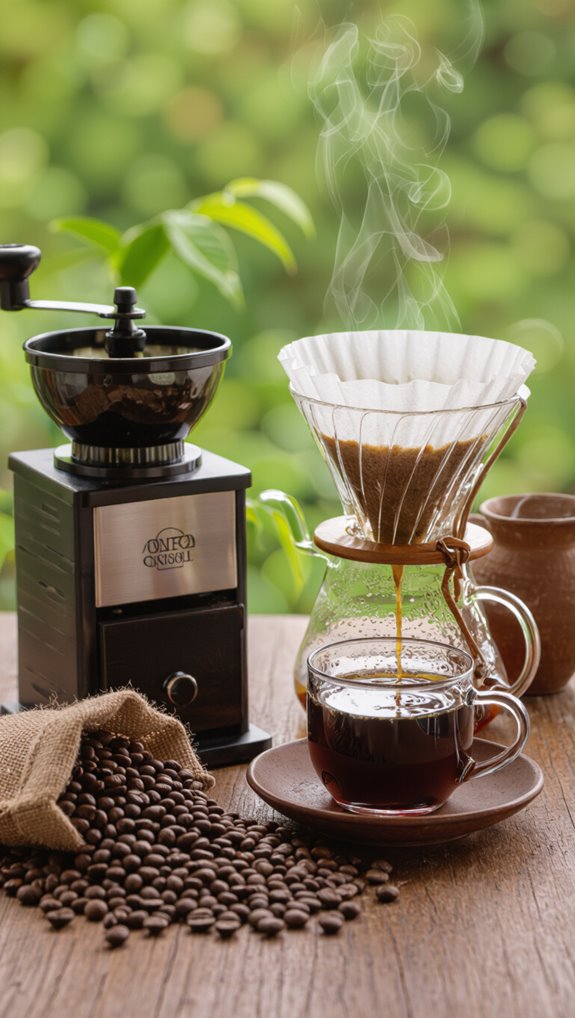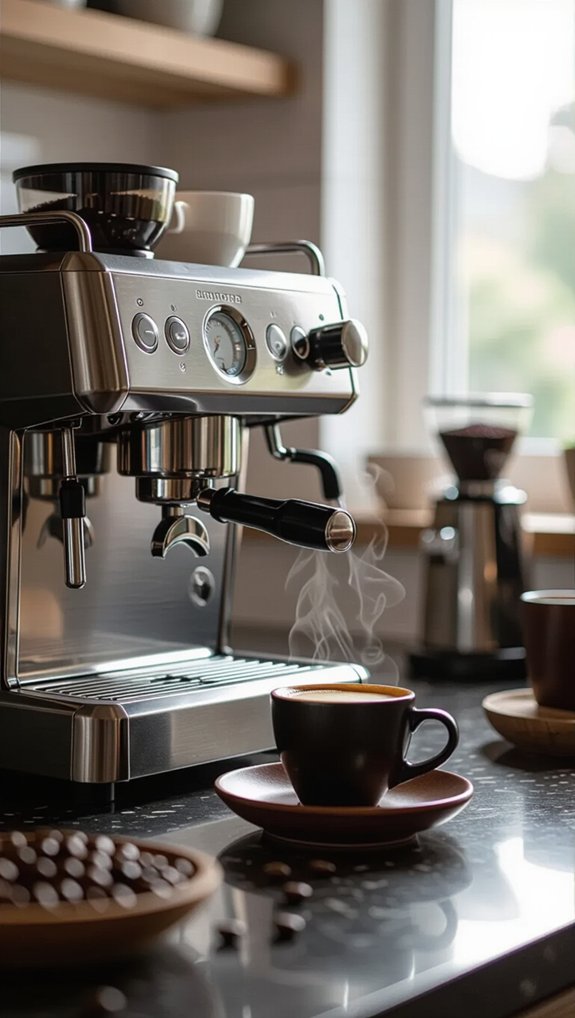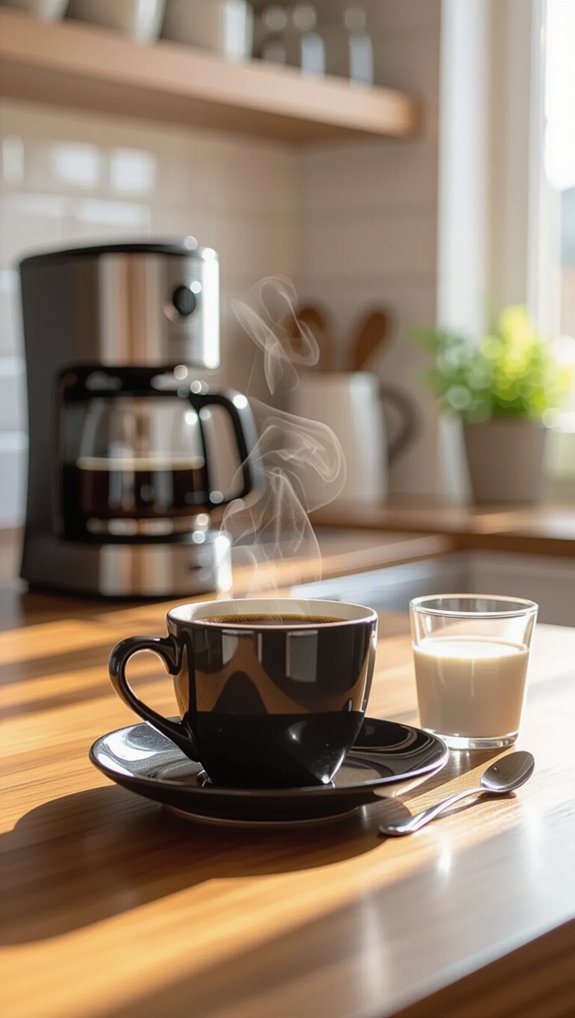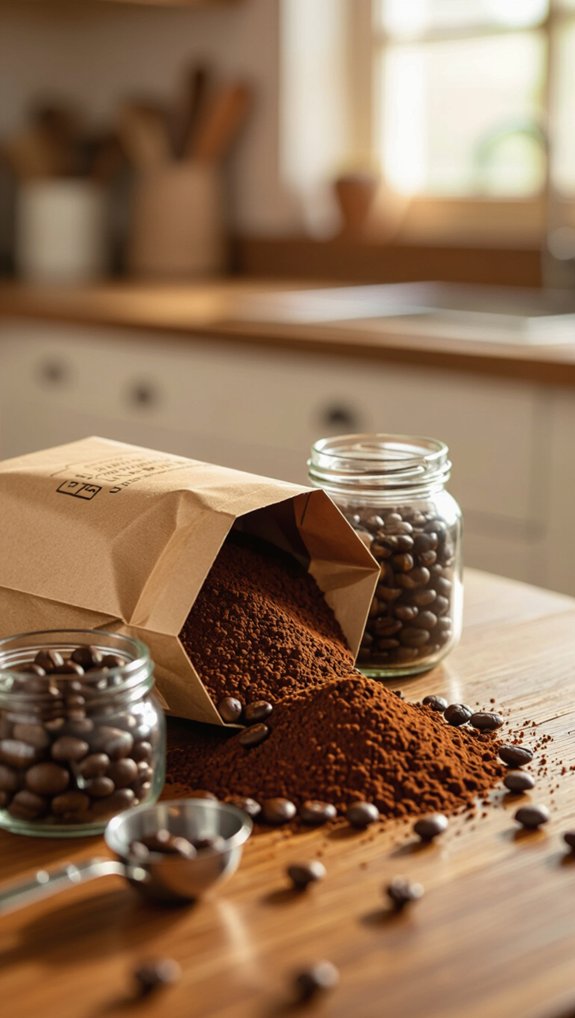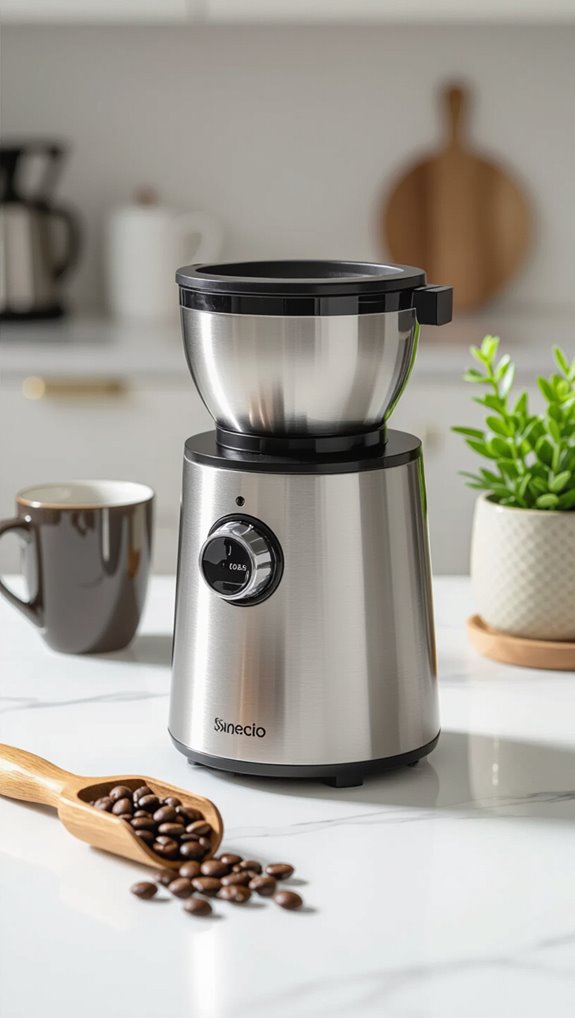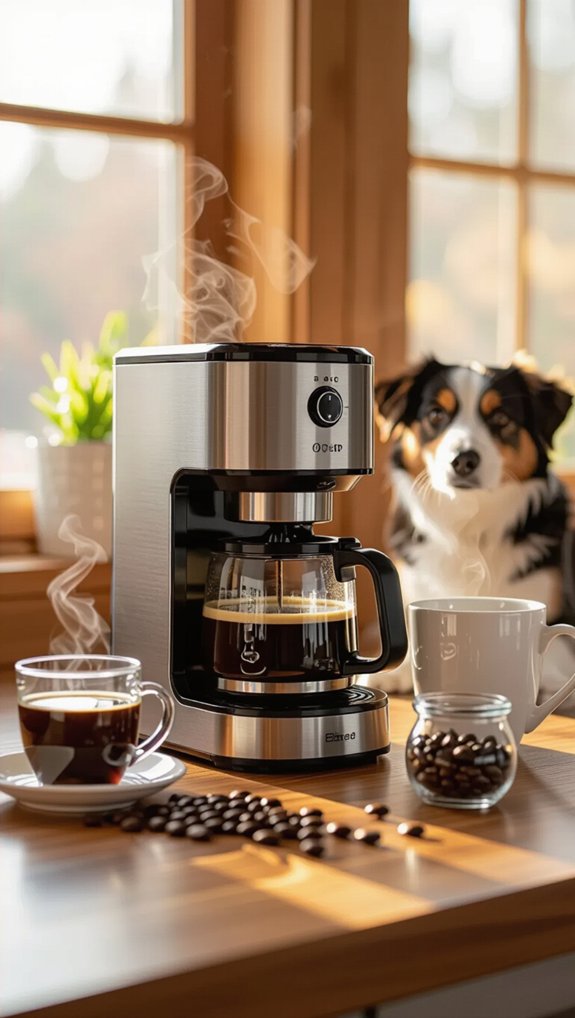Ever wondered what gives certain coffee beans their distinctively earthy, mellow flavor? Many coffee enthusiasts have heard whispers about monsoon coffee but remain puzzled about what makes this Indian specialty so unique and whether it’s worth trying.
Monsoon coffee undergoes one of the most unusual processing methods in the coffee world—green beans are intentionally exposed to humid monsoon winds along India’s coastal regions. This natural weathering process transforms ordinary coffee beans into something extraordinary, creating flavors that can’t be replicated anywhere else.
In this post, you’ll discover the fascinating history behind monsoon coffee, learn how the monsoon processing method works, understand its distinctive flavor profile, and get practical tips for brewing this unique coffee at home. Whether you’re a curious coffee lover or looking to expand your brewing repertoire, you’ll walk away with everything needed to appreciate and enjoy this remarkable Indian coffee.
Table of Contents
What is monsoon coffee, simply explained
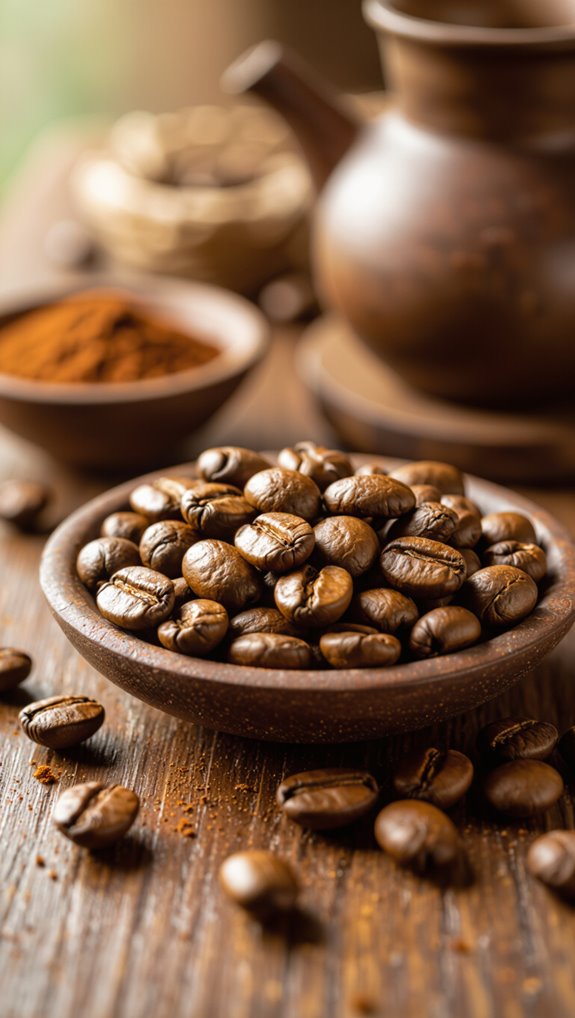
While traditional coffee processing methods aim to preserve green beans’ original characteristics, monsoon coffee takes a unique approach that transforms the beans through deliberate environmental exposure.
Monsooned Malabar, originating on India’s Malabar Coast, involves deliberately exposing green coffee to southwest monsoon winds for 12-16 weeks. This monsooning process causes beans to absorb moisture, nearly double in size, and develop a distinctive pale golden color.
The result? A coffee with incredibly low acidity and a full body that boasts earthy, chocolatey, and nutty flavor notes. It’s a remarkable technique that intentionally weathers coffee beans, creating a smooth, mellow drinking experience.
Where does monsoon coffee come from
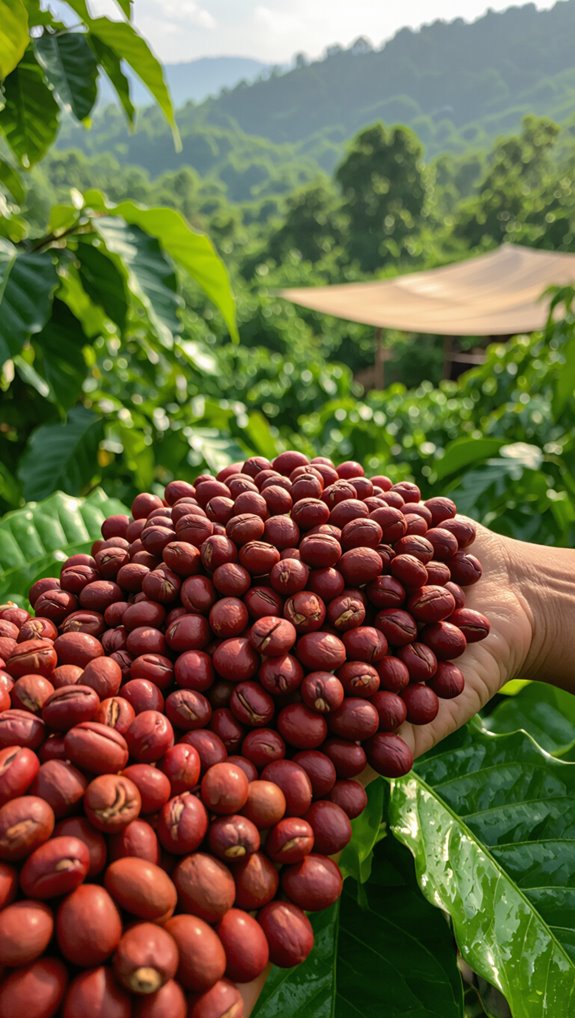
Ever wondered where that uniquely smooth, mellow Monsooned Malabar coffee originates? This distinctive coffee hails from India’s southwestern coast, specifically the Malabar regions of Karnataka and Kerala.
During the Southwest monsoon season (June–September), local processors transform green coffee beans through a traditional monsooning process in ventilated warehouses. Both arabica and robusta varieties undergo this unique treatment, which recreates the historic flavor profile developed during long maritime voyages.
Legally protected under India’s Geographical Indications framework, Monsoon Malabar represents a remarkable coffee tradition that turns seasonal winds into a distinctive, world-renowned brewing experience.
How is monsoon coffee processed today
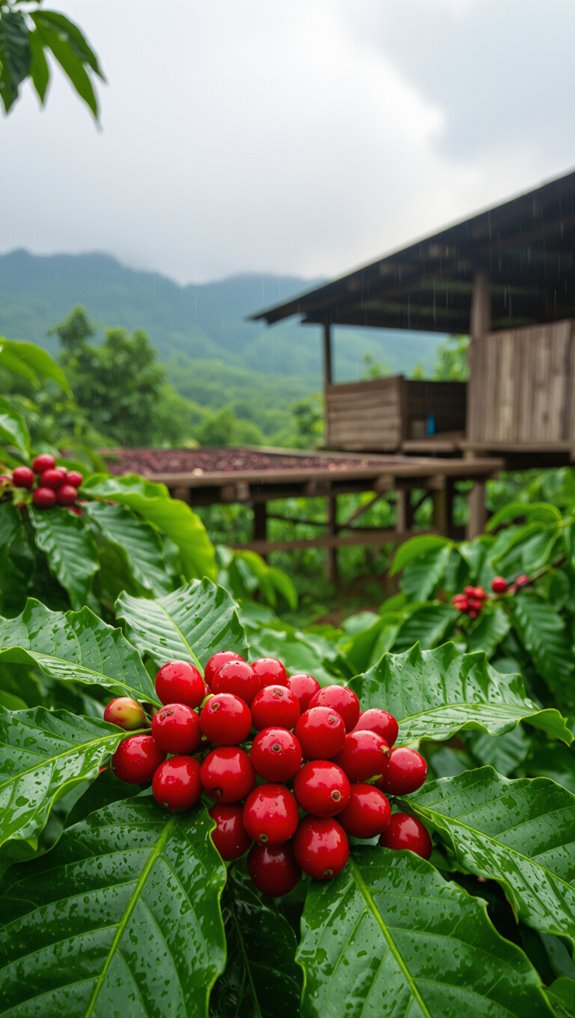
Step into the world of Monsoon Malabar coffee processing, where traditional methods meet precise agricultural craftsmanship.
Monsooned coffee transforms green beans through a meticulous journey using natural monsoon winds. Workers carefully spread beans in ventilated warehouses along India’s Malabar Coast, creating optimal conditions for moisture absorption and bean swelling. They rake the beans multiple times daily, ensuring even humidity exposure and preventing mold.
This unique process raises bean moisture to 14-14.5%, lightens their color to pale gold, and reduces acidity. After processing, beans undergo rigorous mechanical and hand sorting, with 40-50% typically rejected to guarantee premium quality.
What does monsoon coffee taste like
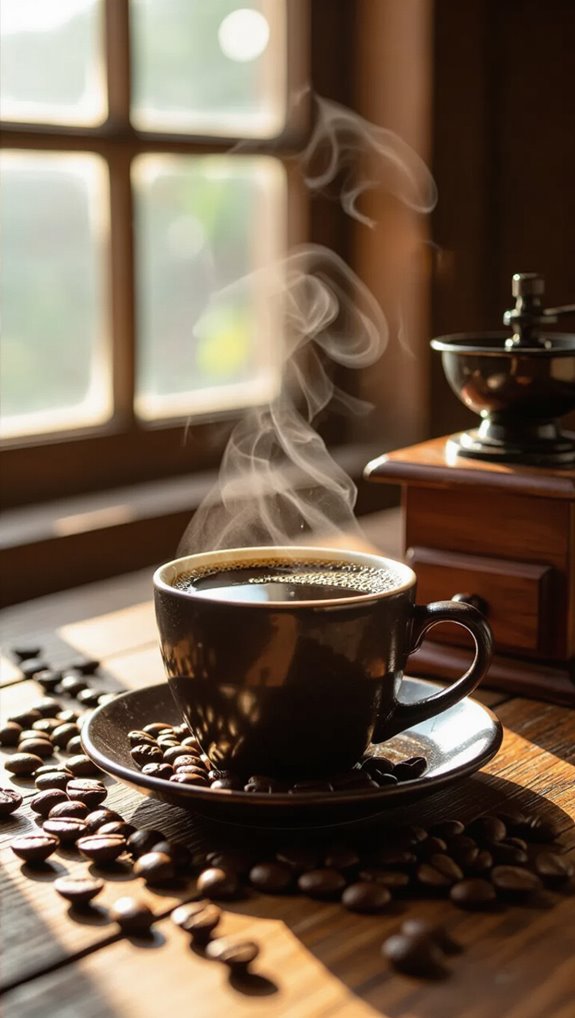
The distinctive taste of Monsoon Malabar coffee offers a sensory experience that sets it apart from traditional coffee profiles. These monsooned beans deliver a deep, earthy flavor with remarkable smoothness, characterized by low acidity that coffee lovers appreciate.
You’ll detect rich notes of dark chocolate, roasted nuts, and a malty undertone—a direct result of exposure to humid monsoon winds. The coffee presents a full-bodied, coating sensation on the palate, with a subtle, lightly musty aroma that’s surprisingly desirable.
Light to medium-dark roasts best showcase the Monsooned Malabar Arabica’s unique flavor complexity.
How to brew monsoon coffee at home
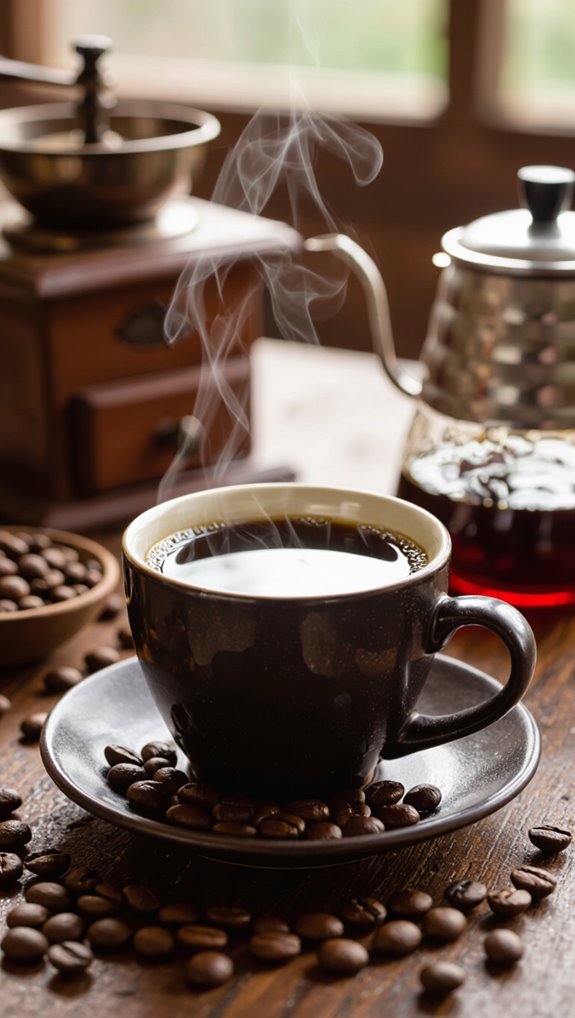
To brew monsoon coffee at home, you’ll need specific ingredients like monsooned green beans, a brewing device (espresso machine, Moka pot, or French press), and fresh, filtered water.
My recommended equipment includes a quality grinder, scale, and kettle to ensure precise measurements and extraction.
I’ll walk you through the key techniques that’ll help you unlock the unique, heavy-bodied flavor profile of these distinctive beans.
Ingredients
Unlock the unique flavors of Monsooned Malabar coffee by carefully selecting and preparing your ingredients at home.
Start with high-quality green coffee beans that have been traditionally monsooned, maintaining their characteristic 14.5% moisture level.
Choose a medium to medium-dark roast to preserve the beans’ distinct profile, which enhances their low-acidity, chocolatey notes.
When preparing, grind your whole beans just before brewing, opting for a slightly coarser grind size than typical Arabica.
Measure out 16–18 g of beans per 250 ml of water, ensuring a perfect coffee-to-water ratio that captures the rich, complex essence of Monsooned Malabar.
Equipment
Dive into the world of Monsooned Malabar coffee brewing by gathering the right equipment for an authentic home experience.
You’ll need a scale to dose by mass, given the unique moisture content of these beans.
Consider a French press or Moka pot to highlight the rich body, and invest in a grinder capable of adjusting grind coarseness for different brewing methods.
Always store whole beans in an airtight container, and grind just before brewing to preserve freshness.
With the right tools, you’ll unlock the deep, complex flavors of this unique coffee style.
Instructions
Now that you’ve assembled the right equipment, let’s walk through brewing monsooned Malabar coffee at home.
For French press, start with a 1:12 coffee-to-water ratio using a coarse grind. Heat water to 200–205°F and steep for 4 minutes to extract those deep, earthy flavor notes.
If you’re using pour-over, opt for a medium grind and slower pour to avoid grassy undertones.
Always store your beans in an airtight container away from heat and light, and buy small batches to preserve the unique characteristics of this low-acid, moisture-rich coffee process.
Monsoon Malabar versus other Indian coffees
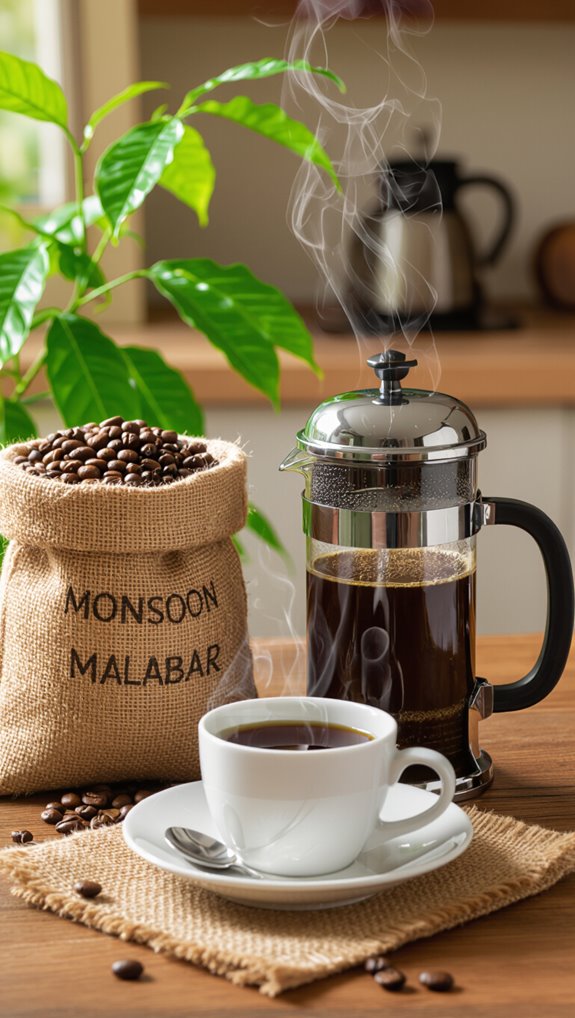
Monsoon Malabar stands out dramatically from other Indian coffees, setting itself apart through a unique processing method that transforms green coffee beans.
Unlike typical Indian coffees from regions like Coorg or Wayanad, the monsooning process on the Malabar Coast intentionally reduces acidity, creating a low‑acid, full‑bodied profile.
While most Indian coffees emphasize single-origin character, Monsoon Malabar prioritizes uniform weathered flavor through blended lots.
Protected under Geographical Indications, this distinctive coffee method swells beans during extended exposure to Southwest monsoon winds, resulting in pale-gold, uniquely processed coffee that’s a favorite in espresso blends.
Best grind size and brew methods
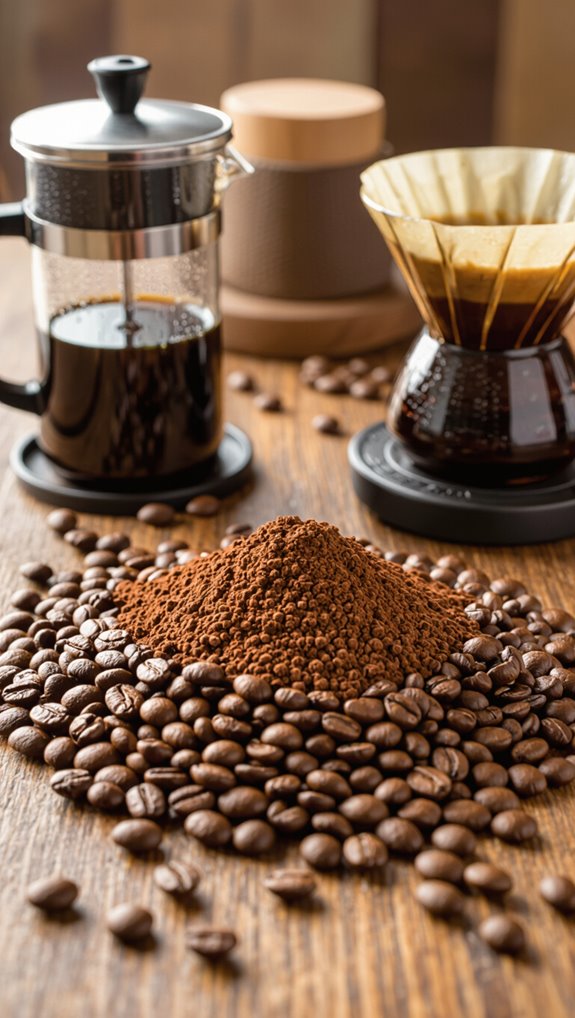
Unlock the full potential of Monsoon Malabar coffee by mastering its unique grinding and brewing techniques. Monsooned Malabar Arabica demands a coarser grind due to its 14–15% moisture content and low density. The ideal approach varies by brewing method.
| Brew Method | Grind Size | Recommended Approach |
|---|---|---|
| French Press | Coarse | Highlight full body |
| Moka Pot | Slightly Coarser | Concentrate chocolate notes |
| Pour-Over | Medium-Coarse | Slower pour |
| Espresso | Fine | Adjust dose carefully |
| Cold Brew | Extra Coarse | Extended extraction |
Experiment with small test brews, adjusting grind by 1-2 clicks to find your perfect extraction.
Buying tips, storage, and freshness cues

Dive into the world of Monsooned Malabar coffee with a savvy shopper’s guide that’ll help you select, store, and savor these unique beans.
When buying green coffee, look for whole beans with a GI certification from the Malabar Coast, and be prepared to pay a premium due to the labor-intensive monsooning process.
Store your high moisture content beans in an opaque, airtight container at room temperature.
Check for freshness cues like pale straw-colored beans and an earthy, chocolatey aroma.
Use within 2–4 weeks of opening to maintain optimal flavor and prevent spoilage.
Common brewing mistakes and simple fixes

Brewing monsooned coffee can be tricky, even for experienced home baristas. The unique monsooning process demands careful attention to roasting adjustments and brewing techniques.
Key mistakes to avoid include:
- Using light roasts that emphasize grassy flavors
- Over-dosing brew ratios, leading to bitter extraction
- Employing fast pour-over methods that highlight musty notes
Solving these issues requires comprehension of the beans’ higher moisture content and lower density. Opt for medium to medium-dark roasts, use precise brew ratios (1:12–1:14 for French press), and choose a slightly coarser grind with slower extraction.
Proper storage in a cool, dry place within 2–4 weeks of roasting ensures optimal flavor.
Pairings, easy recipes, and serving ideas

Monsooned coffee offers a world of delightful pairings and serving possibilities that’ll transform your everyday coffee experience.
Dive into Monsooned Malabar‘s rich flavor profile by pairing it with whole milk lattes or creating indulgent dessert combinations. Its low acidity makes it perfect for a French press brew, complemented by caramel, dark chocolate, or nut-based pastries.
Cold-brew enthusiasts will love steeping these beans for a smooth concentrate that’s refreshing over ice.
Insider tip: experiment with milk-based drinks and sweet accompaniments to unlock the coffee’s earthy, complex notes and elevate your home brewing game.
Frequently Asked Questions
What Is the Monsoon Process of Coffee?
I expose green coffee beans to southwest monsoon winds for 12-16 weeks, allowing them to absorb moisture naturally, swell, and transform color while carefully raking to prevent mold and develop a unique, lower-acidity flavor profile.
How Is Monsooned Malabar Coffee Made?
I carefully expose green coffee beans to monsoon winds and humidity along India’s Malabar Coast for 12-16 weeks, naturally swelling and transforming them from green to pale gold while controlling moisture and preventing mold.
What Does Monsoon Malabar Coffee Taste Like?
I’ll describe Monsooned Malabar coffee’s taste as full-bodied and rich, with earthy, woody flavors complemented by dark chocolate and nutty undertones. It’s surprisingly smooth, with mild spice hints and a deep, coating mouthfeel that lingers pleasantly.
What Is Indian Monsoon Coffee?
Indian monsoon coffee is a unique arabica bean that’s intentionally exposed to southwest monsoon winds, transforming its flavor profile to create a low-acid, heavy-bodied coffee with earthy, nutty characteristics through a traditional processing method.
In Conclusion
If you’re looking to expand your coffee horizons, monsoon coffee offers a unique journey into one of the world’s most distinctive brewing experiences. This traditional Indian processing method transforms ordinary beans into something extraordinary—creating a smooth, full-bodied brew with complex earthiness that answers the question “what is monsoon coffee” in every satisfying sip. The centuries-old technique of exposing beans to monsoon winds delivers a flavor profile unlike any other coffee you’ve tried.
Whether you’re a curious coffee lover or a seasoned enthusiast, monsoon coffee promises an adventure in every cup when paired with the right brewing approach. To fully unlock these complex flavors and master the art of home brewing, you can check out our coffee machine reviews to explore smart, well-reviewed options that will help you extract the best from these exceptional beans. The right equipment makes all the difference in experiencing the full depth of monsoon coffee’s remarkable character.

